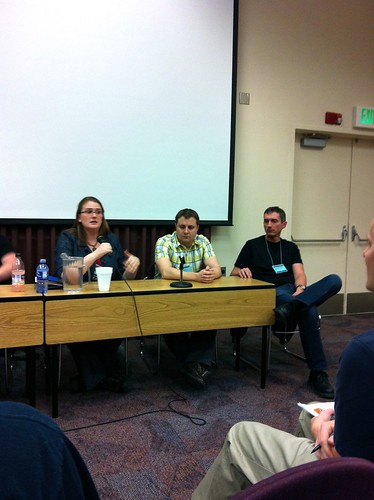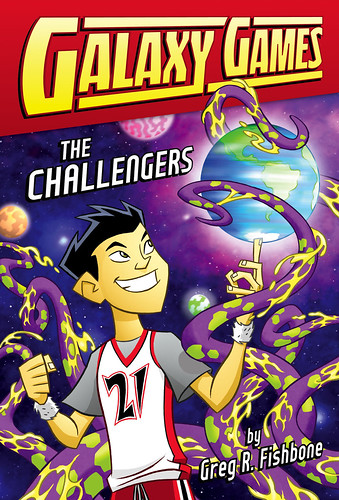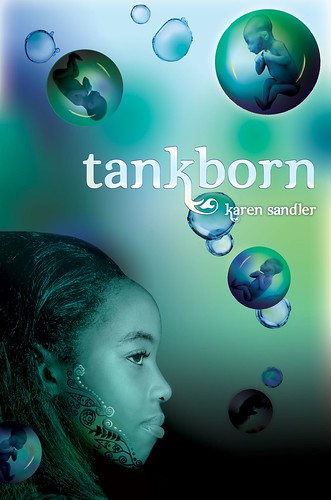- Just got invited last minute to join a panel at ASJA on Saturday on “Perfecting Your Elevator Pitch” from 11 a.m. to noon this Saturday, April 30, at the Roosevelt Hotel in NYC. I believe it’s open to the public (not sure if there’s a cost) so if you’re going, see you there.
- Only a few weeks away from the NESCBWI conference in Fitchburg, MA, which I believe sold out, but if you were one of the lucky ones who got a ticket, I’m looking forward to doing a workshop on worldbuilding and a talk on diversity in fantasy in science fiction. I’ve given “Beyond Orcs and Elves” before, in California and in Utah, so this will be my East Coast version of it, and then after for those who didn’t make it to any of those events I plan on sharing at least parts of it on the blog here.
 If you were to be in my worldbuilding workshop, what would you want to hear about? What kind of handouts would you find useful? I’ve done this workshop before, but it’s been a while and I’m working on updating it, so feel free to jot down a wish list. This is another topic that I’ve been meaning to blog more about, as well, so once the presentation/workshop is over I plan to share at least parts of it here.
If you were to be in my worldbuilding workshop, what would you want to hear about? What kind of handouts would you find useful? I’ve done this workshop before, but it’s been a while and I’m working on updating it, so feel free to jot down a wish list. This is another topic that I’ve been meaning to blog more about, as well, so once the presentation/workshop is over I plan to share at least parts of it here.
- While I’m in Fitchburg, I’m sad to say, I’m going to miss the Diversity in YA Tour stop in New York. Of COURSE all the cool things are happening on the same weekend! But that doesn’t mean that YOU have to miss out on it. They start the weekend after next with San Francisco, where friends Cindy Pon, Malinda Lo, and J.A. Yang will be signing (Cindy and Malinda are the masterminds behind the whole thing and will be at every stop), as well as Gene Luen Yang, who I don’t know personally but you might have heard about through, I don’t know, his National Book Award nomination for American Born Chinese or the book winning the Printz and the Eisner. Then they’ll be in Austin, where they’re joined by a large contingency of authors including Lee & Low author Guadalupe Garcia McCall, whose debut Under the Mesquite comes out soon. And if you’ve read and loved Bleeding Violet as I did and are in the Austin area, Dia Reeves will be there, too, as well as several other notable authors. In Chicago, they’ll be joined by Nnedi Okorafor, among others. In Boston, you’ve got Holly Black, Francisco X. Stork . . . the list is getting too long. Just go to the tour page and look at all the cool people who will be at each stop! I will wave in Cindy and Malinda’s general direction as we pass, three ships in the night (or day as the case may be), me on the way to Massachusetts from New York City and them the other way around.
- Then later this month is BEA. I’m looking forward to seeing a lot of author friends in town. If you’re coming in town for BEA, drop me a line.
- Before BEA is School Library Journal’s Day of Dialogue, which sounds like it’ll be a great event—Katherine Paterson, discussions on diversity, apps, debut authors. Not a bad price for SLJ subscribers, too.
May will be a busy month, and then in June all of publishing will be at ALA (I don’t believe I’ll be going to it myself this year, but Lee & Low will have a booth), then later in the year is WorldCon in Reno, which I wish I could attend but likely won’t be able to shoehorn in between all my work, hopefully a trip home at some point in the summer, and Girls’ Camp for the girls in my church, which I’m chaperoning this year. I kind of feel like saying all this stuff out loud is making the summer feel almost over, the way that when I work on books for a year or more in advance I kind of feel like I’m living in the future. But you live in the present, so you should schedule a few of these events in!


